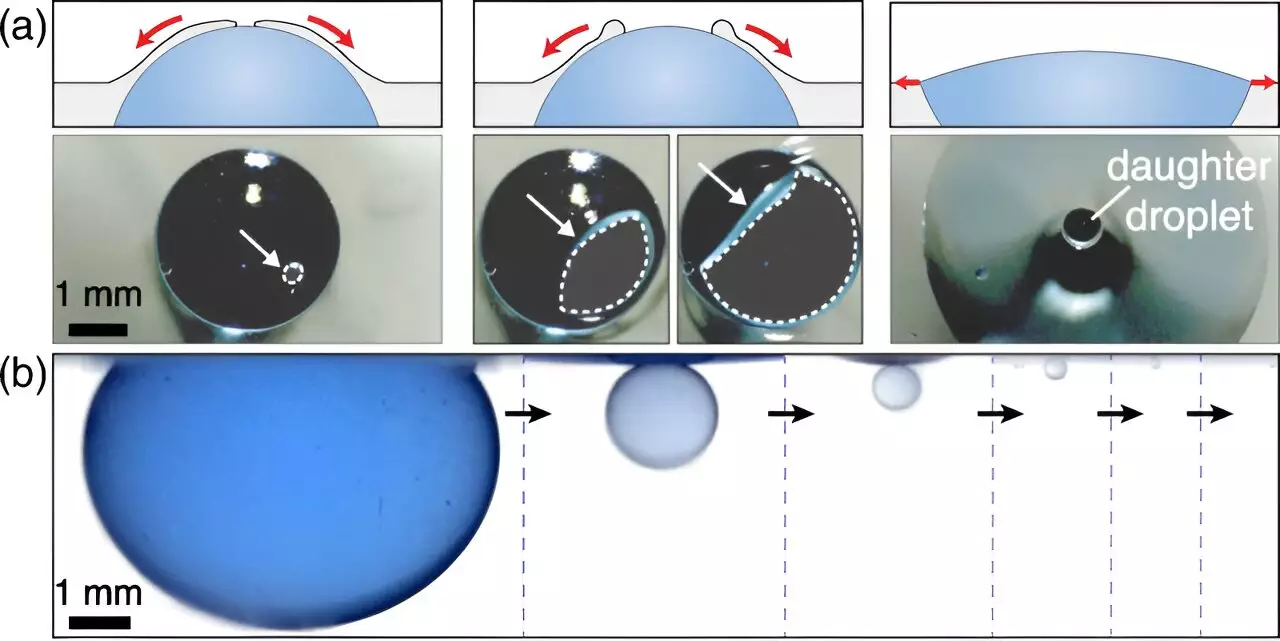Oil spills, whether they occur underwater or on the surface, have devastating effects on the environment. Recent research conducted by the University of Illinois Chicago has shed light on the behavior of oil droplets from underwater spills, revealing a previously unknown pathway through which oil can spread pollution in the ocean.
Traditionally, it was believed that oil droplets from underwater spills would simply turn into a flat film at the water’s surface, forming an oil slick. However, the UIC research team, led by Sushant Anand, discovered a different pattern. When oil droplets reach the surface, they remain partially submerged for a period of time. As the exposed part of the droplet breaks the thin water film covering it, a part of the droplet spreads across the surface while the submerged part deforms and breaks off into smaller “daughter” droplets. This process repeats with the smaller droplets, creating a continuous cycle of droplet formation.
The presence of these tinier oil droplets suspended in the water is a cause for concern as it means that a significant amount of oil from spills remains permanently underwater. This poses a challenge for clean-up efforts which have traditionally focused on removing oil slicks from the surface. Anand emphasizes the importance of understanding the mechanics of oil dispersion to develop more effective clean-up strategies, particularly for underwater spills that occur frequently.
One of the key findings of the research is that the smaller the oil droplet, the harder it is to clean up. Increasing the viscosity of the water can help keep the oil droplets intact so that they form a cohesive oil slick on the surface, making clean-up operations more successful. An interesting suggestion is to introduce biodegradable, water-soluble compounds at the site of a spill to increase water viscosity and prevent the formation of daughter droplets.
The research findings are not limited to underwater oil spills in the ocean. Pipelines that run under lakes and rivers are also susceptible to similar mechanisms of droplet formation. Moreover, oil spills from ships can have enough force to send oil underwater before it rises to the surface, creating the same pattern of droplet dispersion. Anand calls for further research to explore the impact of these tiny oil droplets on underwater species and urges oil companies to incorporate this new information into their spill prediction models.
The research conducted by the UIC team provides valuable insights into the behavior of oil droplets from underwater spills and their impact on the environment. By understanding the mechanisms of oil dispersion, it is possible to develop more effective clean-up strategies and mitigate the long-term consequences of oil pollution in the ocean.


Leave a Reply